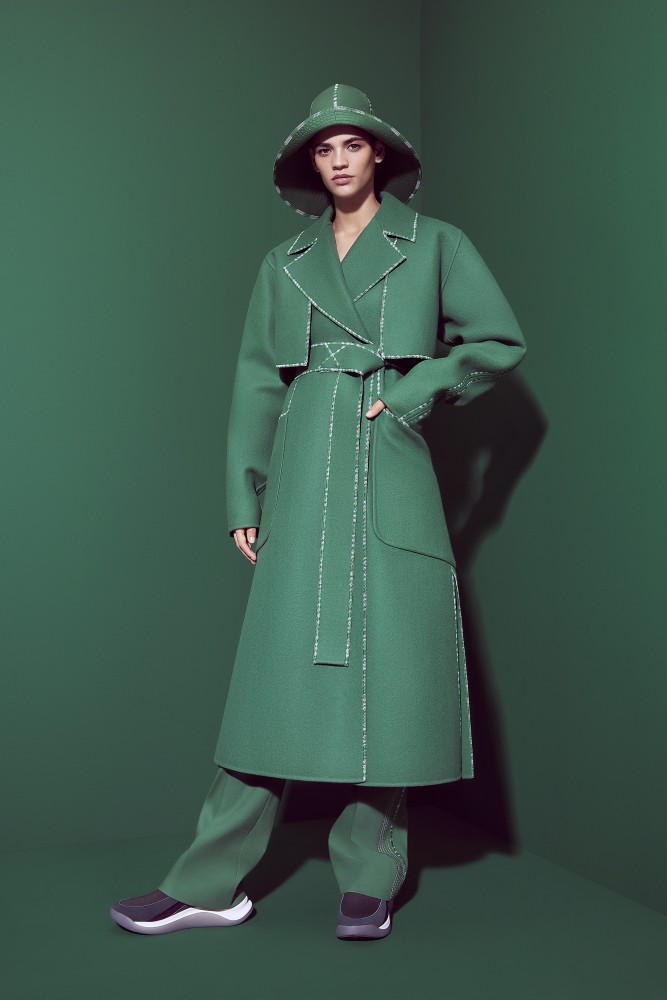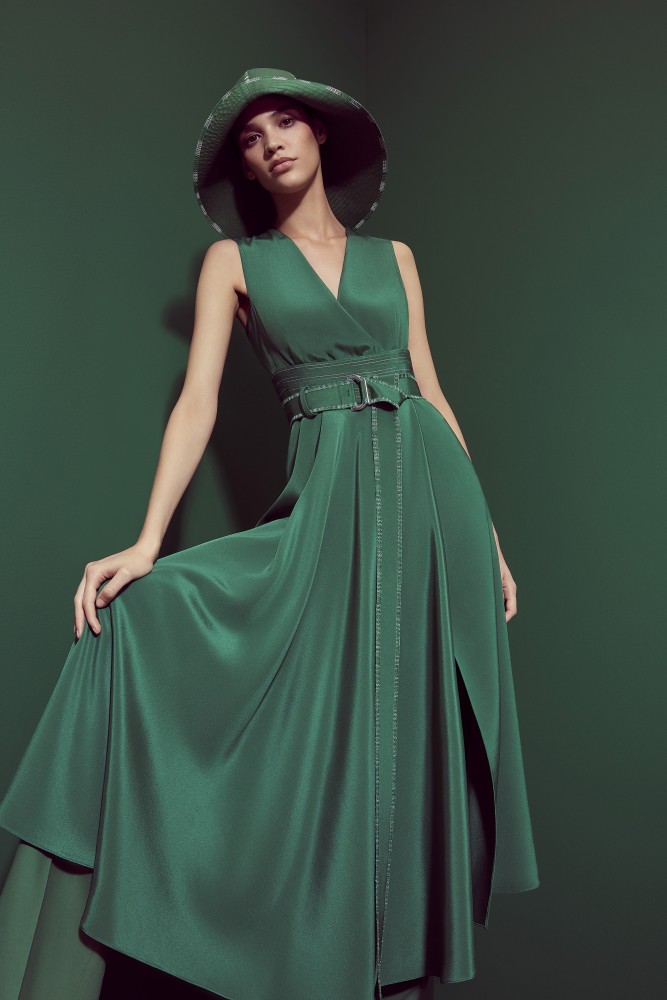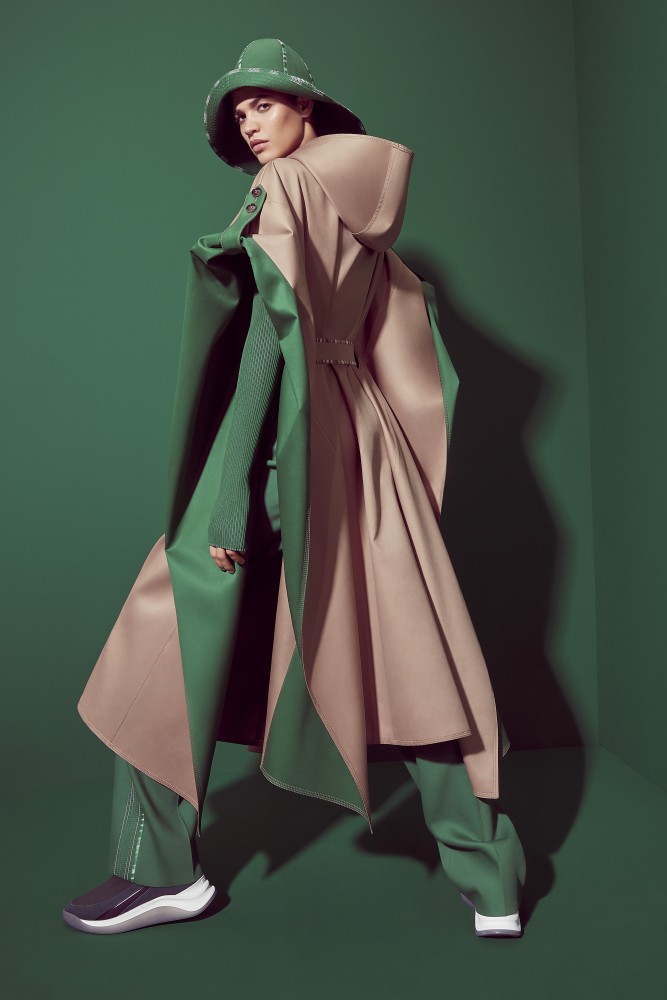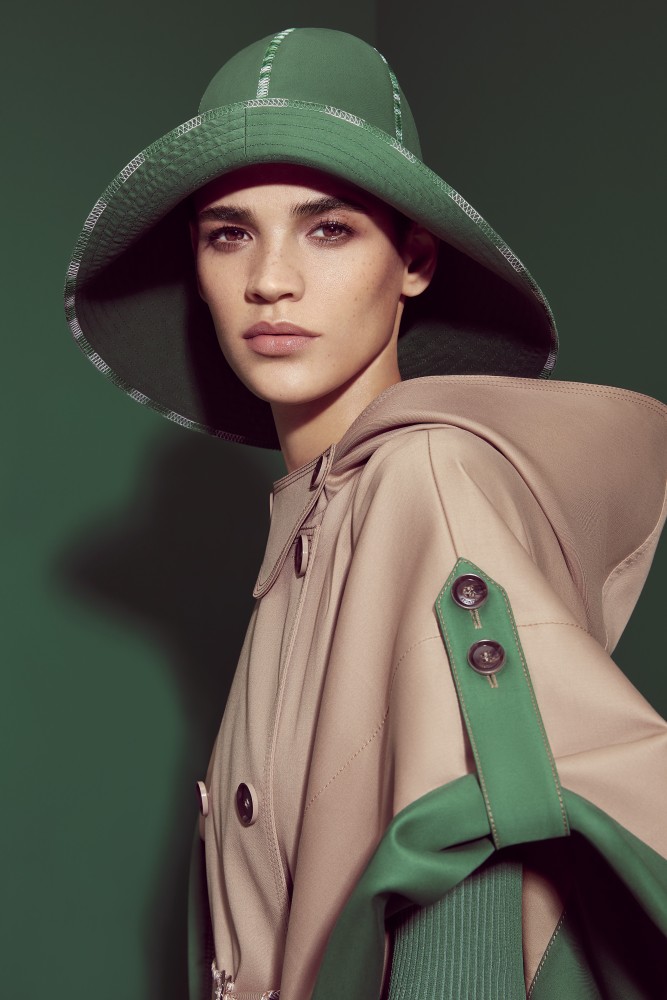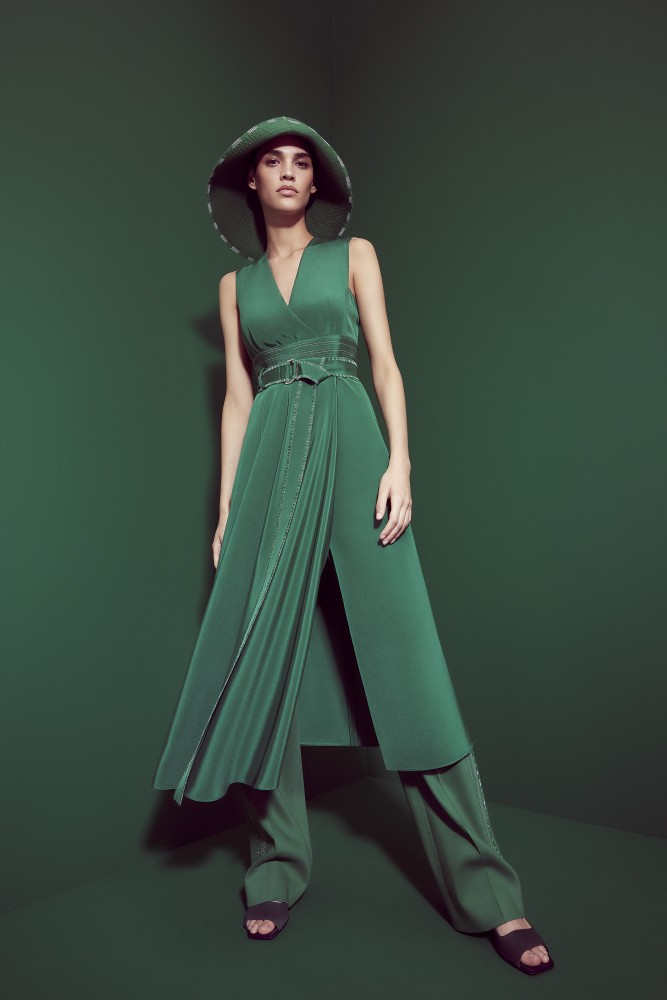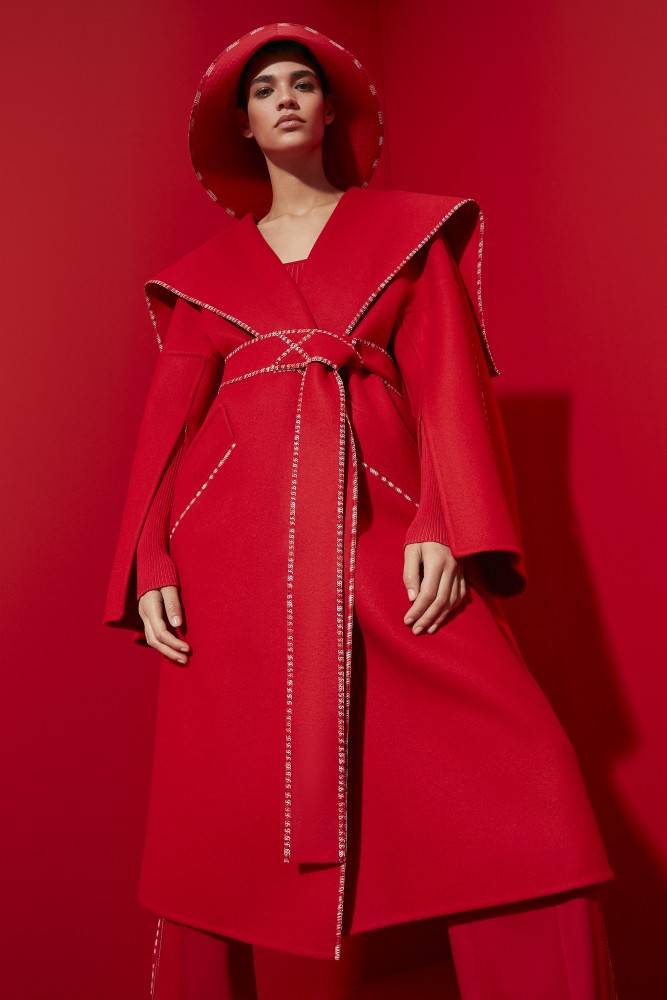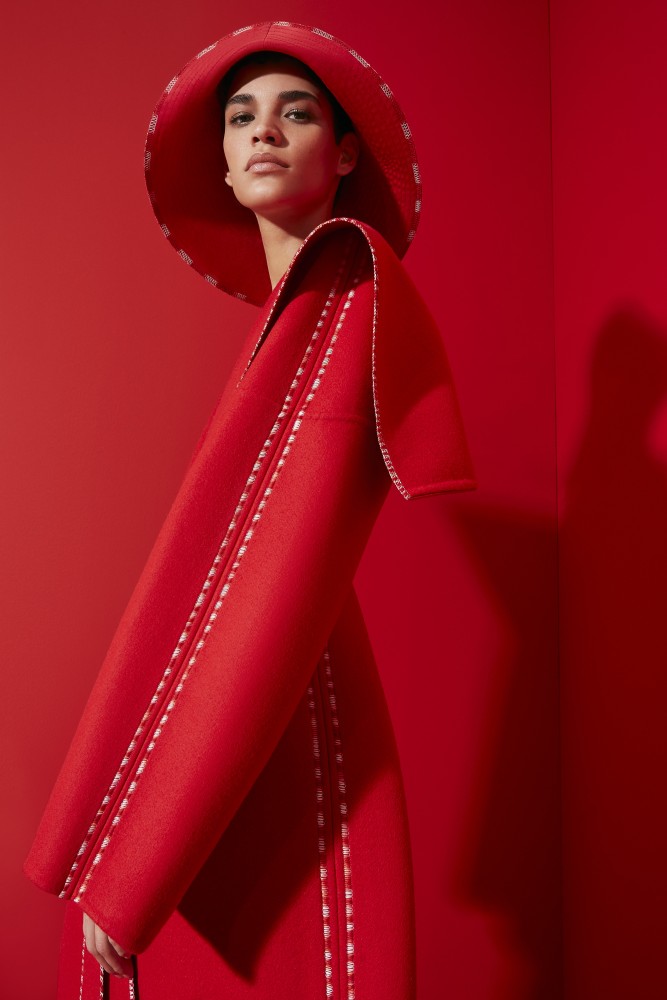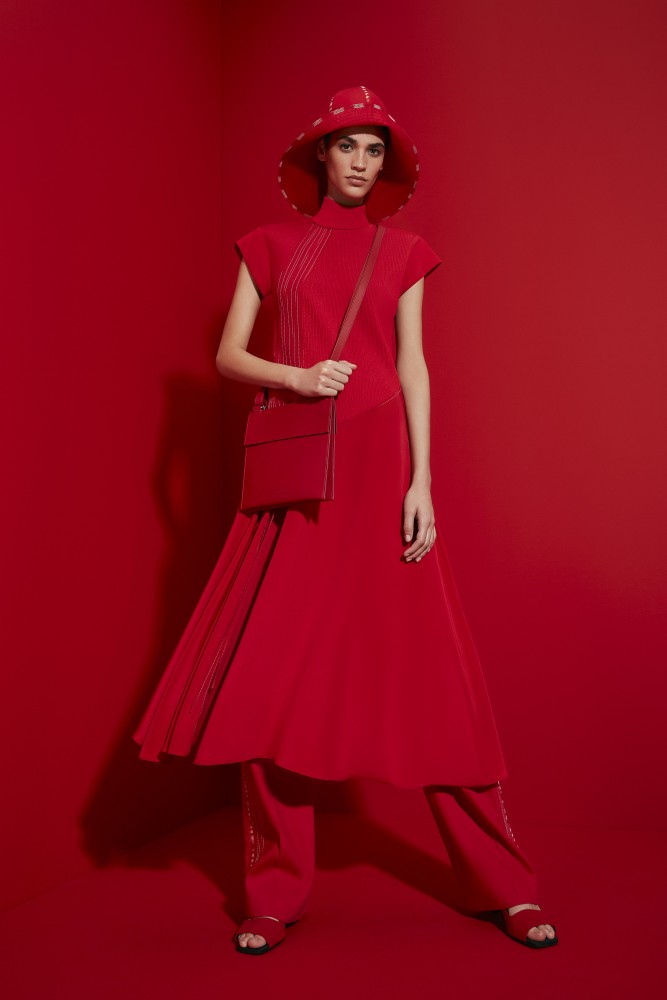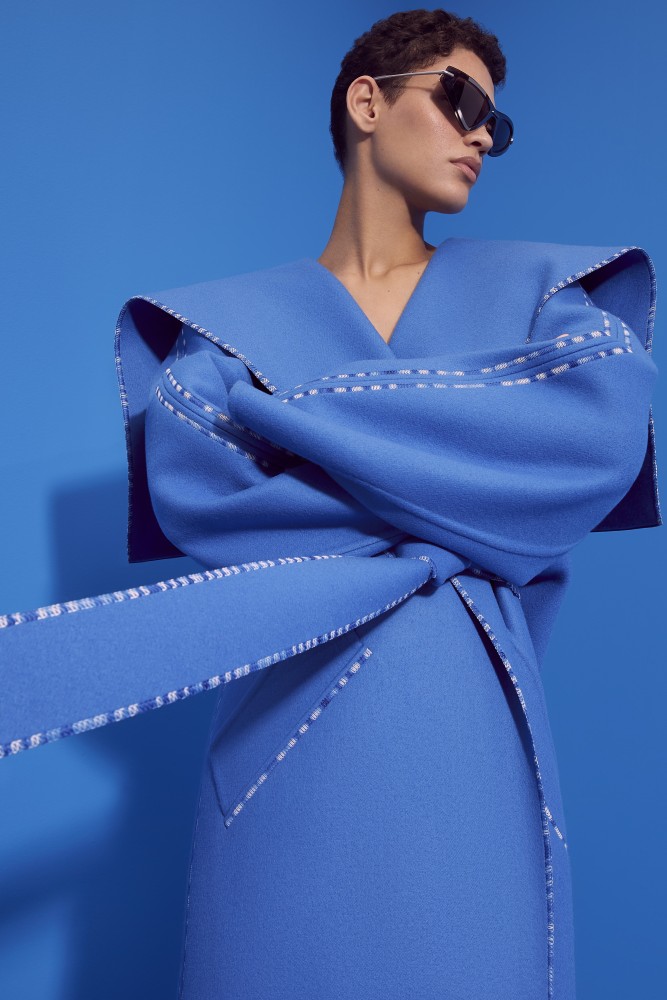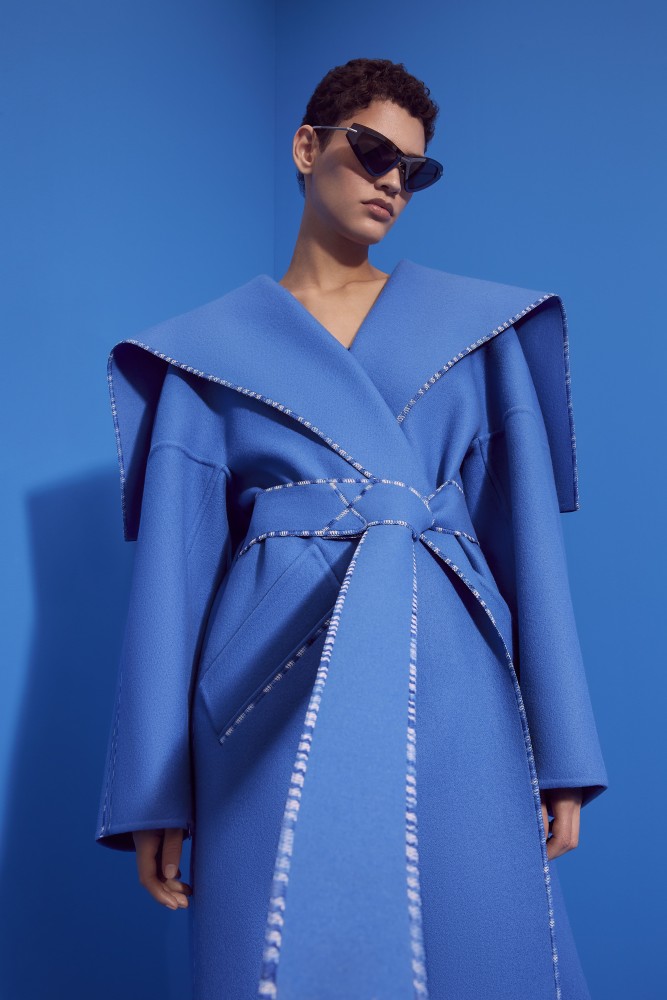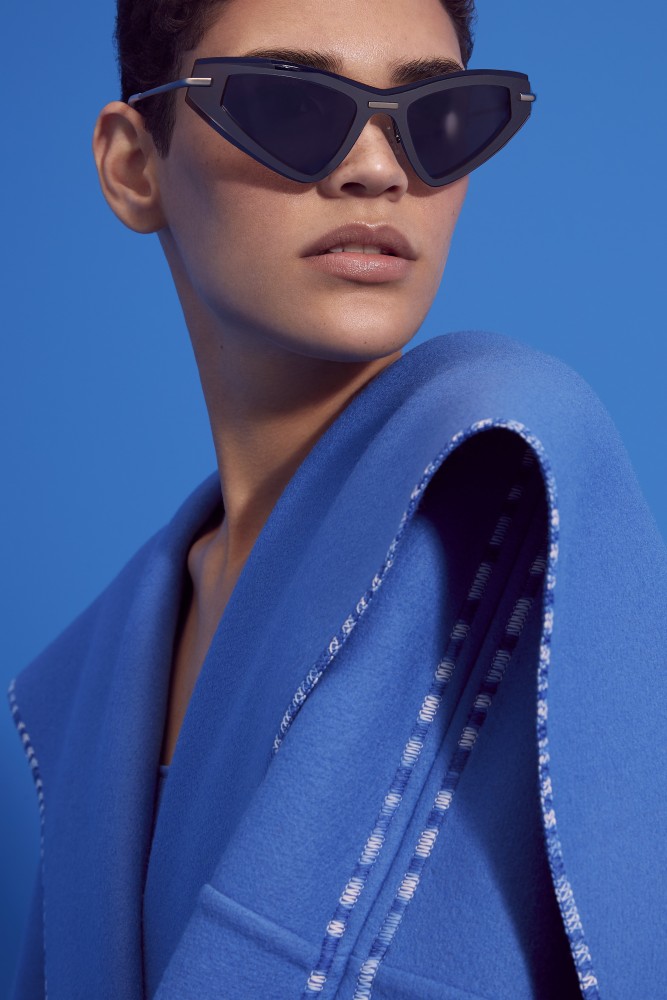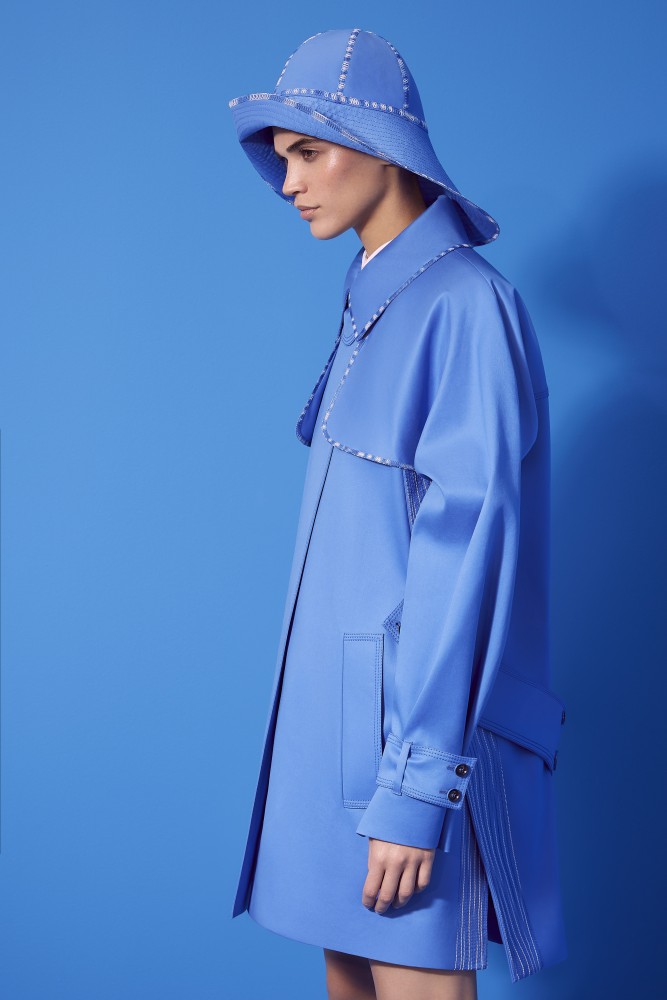In conversation with Sportmax fashion director Grazia Malagoli
Feb 14, 2020
Sportmax fashion director Grazia Malagoli chats with Robyn Ngan about the essence of the brand and the current fashion landscape.
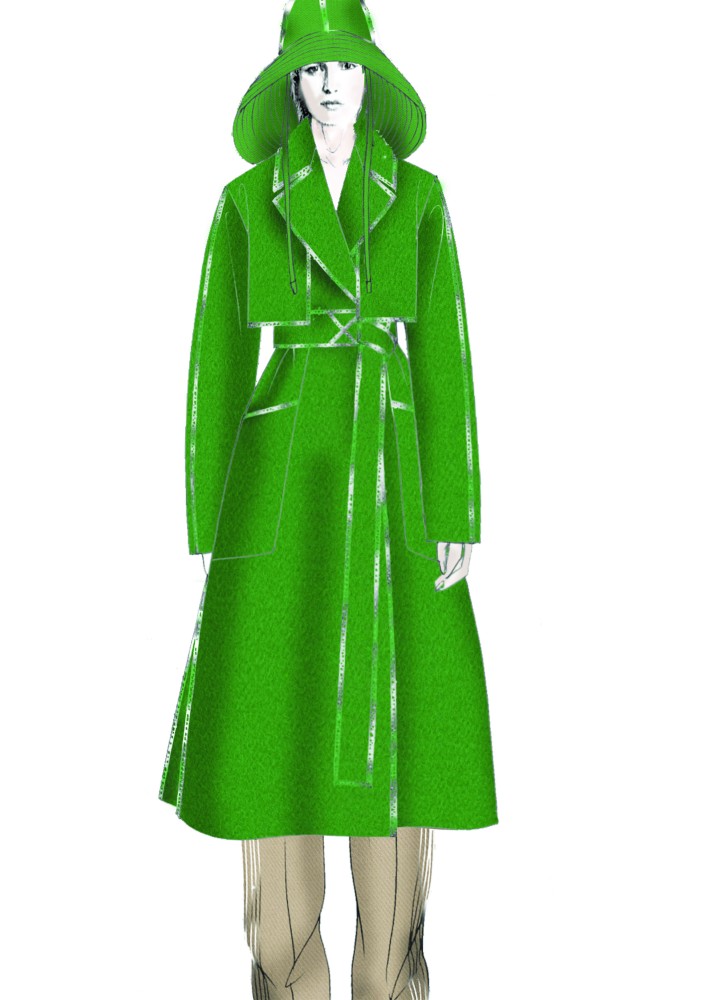
Sketch by Sportmax Design Team 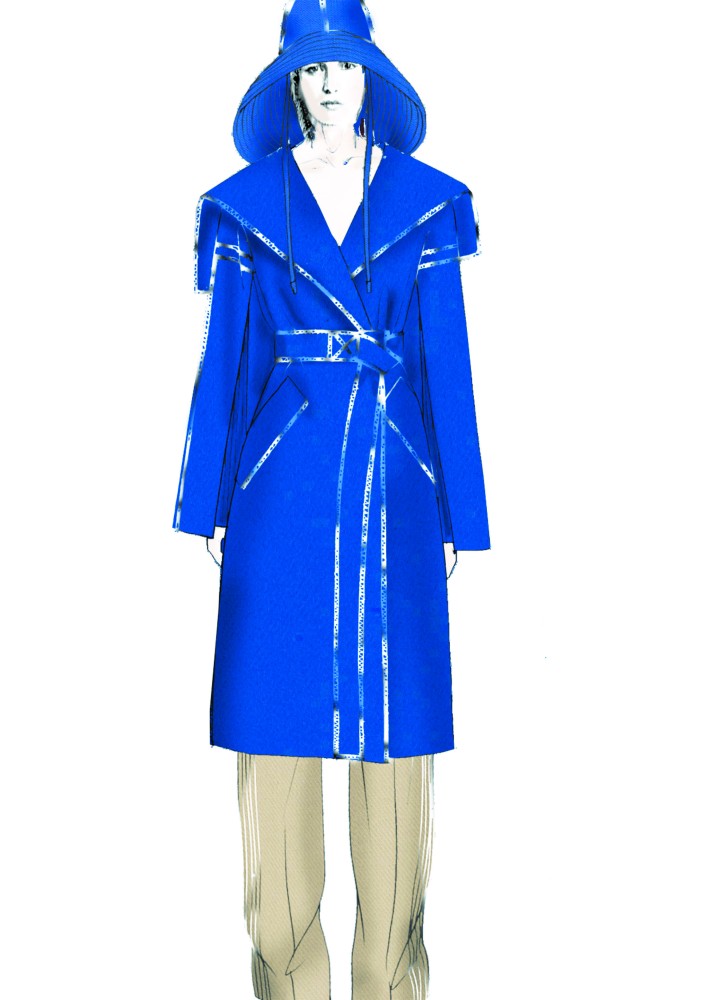
Sketch by Sportmax Design Team 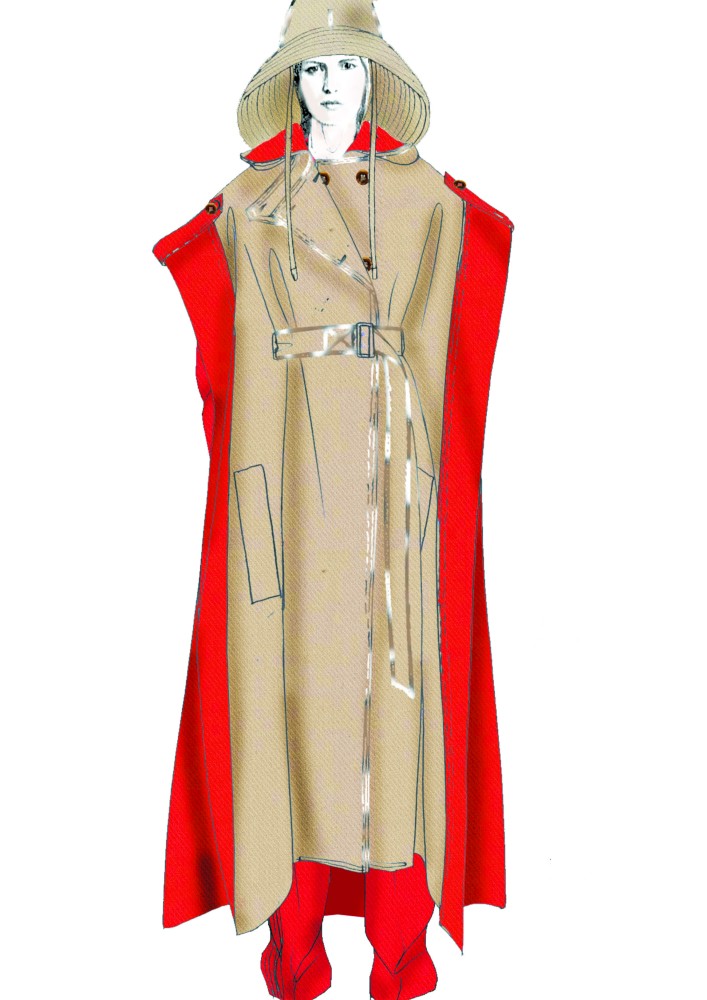
Sketch by Sportmax Design Team
Upon entering Maison Assouline in St James’s in London, I was overwhelmed by the grandeur of the space – floor-to-ceiling bookshelves, with the spines of the tomes each revealing only an eyelet into their secrets. It was a fitting space for the launch of Sportmax’s 50th-anniversary book and a reminder that, just like books, fashion is something that remains and shapes eras.
Published by the esteemed publishing house Assouline as part of its Legends collection, the tome (edited by Olivier Saillard, with an essay by Luke Leitch) documents the history of the brand. Inspired by the rebellious youth in Swinging London, Max Mara founder Achille Maramotti decided to launch Sportmax amidst the generation-defining social and cultural revolutions. The first Italian example of a coordinated wardrobe offering contemporary, trend-setting collections encapsulated the essence of the “Made in Italy” labels tucked into our favourite garments – a testament to the Italian art of savoir faire and quality.
In the red room of Maison Assouline in St James’s in London, we were in conversation with Sportmax’s fashion director, Grazia Malagoli. Wearing a midaxi high-necked red dress with matching red lipstick, we were prompted that we were in the presence of a visionary. With a beaming smile, this lady in red shared her wisdom about her perception of the ever-changing fashion landscape, the redefinition of femininity and her hopes for the future of mankind.
Musing over every word and demonstrating what true poise and elegance is, Malagoli’s presence alone was able to explicate Sportmax’s success under her direction. The passion that poured from her lips was the true denotation of her power and understanding of a fickle industry, all underpinned by a transcendent aura of modesty. Her name may have been in the mouths of every guest at the book launch, but just like a myth or a spirit, Malagoli remained shrouded in mystery.
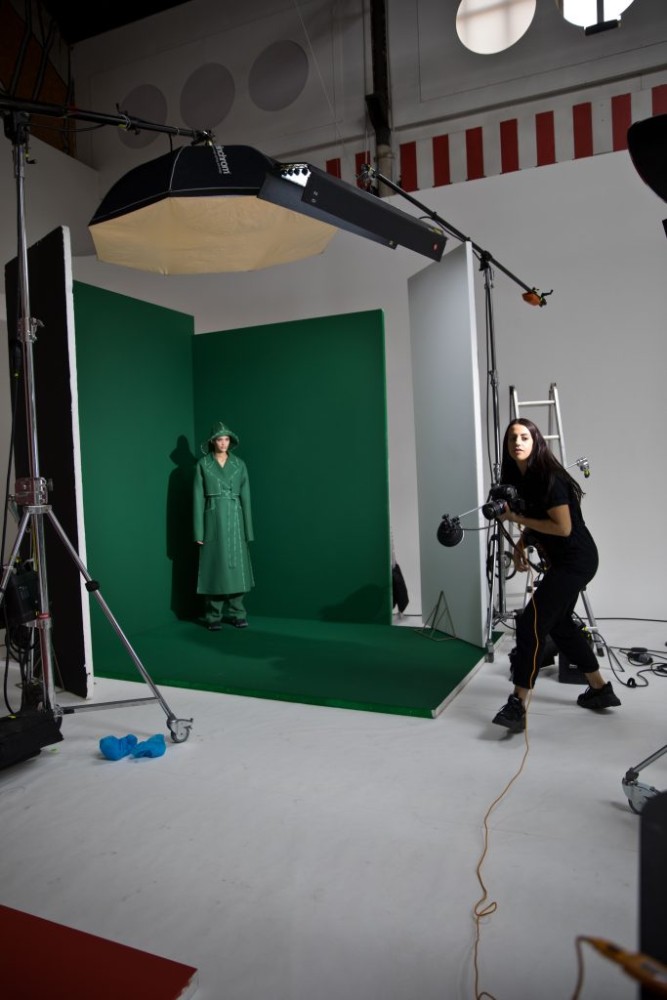
You began working for Max Mara in 1979 and you’ve stated before that the Italian fashion landscape was “very charming” at that time. Since then, trends and brands have progressed and evolved a lot. What do you think sets Italian fashion houses apart from others? And how do you think the Italian fashion landscape has changed since you started?
We can say that when the Sportmax brand started, the Italian fashion landscape was very simple. There were mainly three big names on the market, which were Max Mara, the Girombelli Group [Genny] and Gruppo Finanziario Tessile. From the landscape that I just described, the only survivor to today is Max Mara. As a brand and a fashion house, it has managed to survive as it has always been consistent with a clear focus in mind; such type of work has been continual up until today. As far as Sportmax is concerned, it was born to provide the right solutions and cater to the right needs, all done at the right moment – so it was born as a collection and as a brand to interpret the ever-changing and ever-evolving landscape within fashion. It still remains just as contemporary and relevant nowadays due to its consistency and regularity. We only produce good work as we seek to represent such evolution, especially with the power of the “Made in Italy” hallmark.
Are there any particular events or trends that have moulded the brand into what it is today?
Sportmax was born with the aim of satisfying needs, especially those of the new generation – a generation that is in constant evolution. Up to now, we, as a brand have been maintaining constant and consistent work with a team of designers that ensure only good choices are made. We aim to continue delivering the quality that is associated so heavily with “Made in Italy”.
Each year we see a revival or a reprise of a different decade and for this anniversary collection, Sportmax is evoking ’70s nostalgia. To you, what is it about ’70s fashion that is so iconic and special? Do you have any favourite pieces or fashion moments from the era that you would like to share?
Maybe it’s because I started to work in fashion during the ’70s, which happens to be of particular interest to you, but I have to say the ’70s and ’80s were a very fertile time for fashion. As I experienced it personally, there was a new explosion of creativity, which was very intense, very relevant and very significant – something which we haven’t really seen since. This has affected my work greatly. But we must also remember that the ’70s were a time of industrialisation, and there was a movement from couture to prêt-à-porter to serve a wider and more diverse demographic of women buying fashion. Moreover, it was a time of unique creativity that we haven’t seen replicated again. We still want to emulate and express that today.
The ’70s were a time when very new and important fashion designers were born – in Italy and France especially. For Italy, we saw the likes of Armani and Versace. They wanted to convey a new, unique and strong personal character in their creations. For the French, brands like Gaultier wanted to change the entire landscape. For instance, Gaultier was very ironic with the clothes he wanted to offer women of the time. And on the other side of the world, in Japan, it was land of complete change and evolution, where they sought to desecrate fashion completely and express the femininity of women in a new form, a new light, with a focus on the traditionally non-feminine attributes of fashion.
Research in itself is a continuation of the evolution we do in our own work. Essentially, they all culminate in and contribute to the individual creativity we want to convey. But going back to your original question, the ’70s were really formative years for me; I was developing my skills during that time.
I love that you talked about femininity, because Fashion Week seems to “redefine femininity” every season. What does femininity mean to you? Do you think the term in itself has been appropriately appropriated for the modern world?
Yes, femininity has changed – just as women have changed, of course. In the past, femininity was very tangible and the way it was expressed was very tangible also, with a special focus on the shape of the woman herself, with the clothes highlighting and accentuating certain forms. Nowadays femininity is expressed in a more sophisticated manner, emphasising a more inner and personal way that is no longer as tangible as the past.
Also, there is evolution in such femininity because there was a time that still persists today where femininity is linked to sport. Sometimes sport can forget about femininity or even appear detached, but we want to recuperate such femininity for the new generations and show the link with femininity being a reaction to sport. In the past – actually up until not that long ago – there were more sportif trends. For example, with sneakers, there was an expression of a more relaxed feeling. But now we want to redefine that. We want to make femininity more delicate, more simple and more cared for.
If you could relive any era, which one would it be and why?
Maybe the [ancient] Egyptian era, because of the mystery that surrounded the Egyptian culture. It was so mysterious, but at the same time very innovative.
We’re here to celebrate the 50th anniversary of Sportmax. What does heritage mean to you and how does this translate to the brand? What is your vision for the future of Sportmax?
That’s a very difficult question. Well, my vision for the future is maybe one where there is a general hope for some kind of reaction, to maybe what we would consider the human weaknesses – the fact that man has made a few mistakes in the past. Let’s talk about wars, for instance; I think man and humankind have realised such mistakes, and we have a duty and a need to tackle the future to facilitate more balance, to create a world with more responsibility. This should also be reflected in fashion, especially in the making of the clothes of the modern world, because if mankind is able to mature, then I think clothes should mirror this; clothes should no longer be the protagonist. Instead, we should maybe shift our focus to the sustainability of the environment – it is something we must work on. It is difficult to help find something that can truly build a better vision for the future.
Continuing with the theme of the future, sci-fi films in the ’80s predicted that people in the early 21st century would be in silver spacesuits with orbiting rings – but that’s clearly not the case. How do you imagine, or hope, that people in the future will dress, live and interact?
This is another difficult question! [laughs] I think there is a compulsory path that we must follow if we want this planet to survive – and this path is environmental sustainability. Of course, this contrasts with today’s industrial world and the economic growth that every country aims to attain, or at least it has from what I have gathered from my own experience and observations. I think in order to help mankind react to this, as I mentioned earlier, we need mankind to be more responsible for their actions and to react to what has been done up to today. Fashion today, or at least up until today, has been mainly focused on the external look – it has relied on the way people want to appear. But perhaps fashion for the future should be something that is concerned with and experienced as a means to provide peace and calm. What I want to say that is, in all honesty, I don’t have a real answer, nor a definite answer to your question – it’s a difficult one.
In every industry and dynasty, there’s a “golden age” that is transcendent. Do you think we’re currently in a golden age of fashion? If you don’t, is there a decade you consider to be a golden age?
Surely the golden age is not now. I think the golden age of fashion was between the ’70s and the ’80s, or possibly even a few years before that time. It’s something that I experienced myself – and it presented itself as an age, as an era of super-positivity and super-creativity. Today’s creativity is no longer the same and in truth, it’s a bit contaminated – no longer pure like it was back then.





























